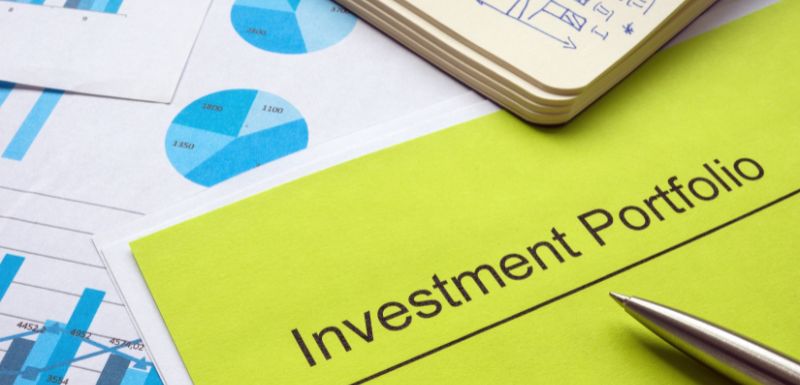The Importance of Portfolio Reviews

It can be said that the hallmark of great Financial Advisors is the efficiency and efficacy of their Portfolio Review process. We live in a dynamic era, in which reality is evolving on an almost continuous basis. In such a scenario where today’s reality may be markedly different from yesterdays, the convenient “SIP it, shut it, forget it” philosophy may not hold its ground too well. It becomes critical to revisit your investment portfolio at least once a year, or if high-impact economic events take place, to make sure everything is still in sync. Here are five key objectives that conflict-free Financial Advisors aim to achieve during a periodic Portfolio Review.
Revisiting your Asset Allocation
Asset allocation strategies are never cast in stone. For instance, a hybrid fund may have been an ideal choice when markets were overvalued, but might need to be replaced with a large cap fund if the markets correct drastically and valuations become attractive for long term equity investing. Market dislocations such as the one brought about by the recent COVID-19 pandemic also serve as excellent entry points for fence sitters who have shied away from expensive markets in fear of a correction. A Portfolio Review is the ideal opportunity for taking a relook at your present asset allocation, and deciding whether it warrants a tweak.
Re-evaluating your risk tolerance
It would be a gross oversimplification to assume that one’s ability to tolerate investment risk remains static throughout their lifetime. The truth is that changing life situations may drastically alter your investment risk tolerance. For instance, a windfall gain such as an inheritance or a property sale may increase your ability to take risks with your Mutual Fund investments. At the same time, a job loss may force you to buckle down and reduce portfolio volatility by moving a large chunk of your investments to liquid funds or arbitrage funds. Either way, the onus is on the Advisor to understand if your current portfolio is still in sync with your Risk Tolerance levels or not, and this would be one of the key objectives of the Portfolio Review process.
Weeding out underperformers
In the investment world, yesterday’s heroes can very well become today’s zeros! The departure of a star fund manager or management team, the exit of a foreign JV partner, a complete takeover of the Asset Management Company, a marked shift in investment philosophy or the simple inability to deliver long term outperformance due to poor decision making are just a few reasons to double check whether a fund continues to deserve a place in your portfolio or not. During a Portfolio Review process, a qualified Advisor capitalises on high quality research to replace funds for whom the outlook has now become bleak, and replaces them in the process. Although excessive churn is definitely uncalled for, erring on the side of being too passive could also cost you dearly in the long run. A balanced approach is key.
Keeping things neat and clean
It happens ever so often that portfolios get cluttered. An NFO here, a tip from a friend there, a little punt now and then – and before you know it, you’ve piled on funds like there’s no tomorrow. The trouble with an overdiversified portfolio is that suboptimal performers negate the star performers, and you’re typically left with returns that are not benchmark beating – a classic case of much ado about nothing! During a Portfolio Review, a Financial Advisor takes stock of all your current holdings, and helps you consolidate your investments into funds that have the brightest outlook. As a result, your portfolio stays neat and clean, and is easy to track and manage. Instead of following a “spray and pray” strategy, your Advisor ensures that you follow a focused approach based on common sense and intelligence.
Cashing in on present trends
If there’s one thing true about trends, it is the fact that that they change! This is especially true during times of crisis, during which sectoral leadership undergoes drastic alterations. During the dot com bubble, consumer goods ruled the roost. Before the Lehman crisis precipitated the most infamous bear market in recent history, oil and gas were king. And now, Financial Services constitutes 36% of the bellwether NIFTY index. Going forward, we may see sectors like Pharma, Software and Telecom (Services) outshining the rest of the pack. During a Portfolio Review, your Advisor will evaluate your holdings to check whether you are set to capitalize on future trends. For this reason, a review becomes all the more critical during major inflexions such as the one brought about by COVID-19.
It's worth noting that in today's digital age, one can rebalance their Mutual Fund portfolio seamlessly, with zero paperwork. If you are not already enabled to transact digitally on your Mutual Fund investments, there could not be a better time to hop on board! In fact, the Portfolio Review is also an ideal time to ensure that you are not dependent upon paperwork to make future portfolio adjustments. FinEdge's top class paperless transaction platform allows for seamless execution of portfolio review recommendations with zero paperwork, and takes only minutes to complete.
Would you like to have your current holdings reviewed by an expert Financial Advisor from India’s leading Financial Planning company? Get in touch today!
Your Investing Experts
Relevant Articles
Essential Asset Allocation Strategies for a Balanced Investment Portfolio
In 2024 (as of June 2024), the Nifty 50 Index has given a return of 28.12%. During the same period, gold has gone up by 23.56% and fixed income has given a return of 7.27%. In the calendar year 2022, gold was the top-performing asset class, whereas in 2015, fixed income was the top-performing asset class. So, different asset classes take turns to outperform each other year after year. Hence when it comes to managing existing wealth, most investors follow asset allocation by building a diversified investment portfolio. In this article, we will understand what asset allocation is, asset allocation strategies, and how to use them to build a balanced investment portfolio.
What It Takes to Build a Resilient Portfolio
The Indian stock market has been on an upward trend for nearly three years. The sharp market correction of 30% plus seen during March 2020 seems to be an event in the distinct past. However, such sharp volatility is a part and parcel of equity investing. Hence, from an investor perspective what one needs is a resilient portfolio which can weather any market disruption.
Top Tips for Successful Investment Portfolio Management
We have all heard the well-known phrase: “Don’t put all your eggs in one basket”. The phrase applies to many aspects of life, including investments. If you put all your money in a single asset class or security, and its value falls sharply or goes bust, you will incur significant losses or lose all your money. Hence, you need to build a diversified investment portfolio and manage it well. In this article, we will understand what is investment portfolio management, how to build and manage an investment portfolio.
.png)
.jpg)

